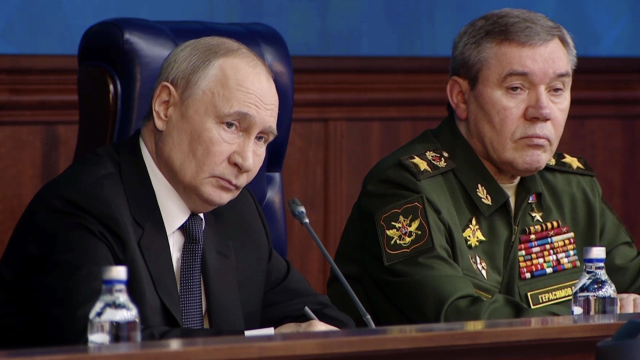Petroneft, the biggest gainer among Russian oil producers this year, aims to triple output and reserves by drilling deposits abandoned during the Soviet era.
“A lot of time when you talk about Russia you need to talk full-cycle costs,” chief executive Dennis Francis, a former executive with Marathon Oil Corporation in Russia, said in an interview. “You can pick up reserves cheaply. While you make less money, you also spend less money finding the barrel.”
Drilling results at a prospect by Petroneft’s Soviet-era Lineynoye deposit in the Tomsk region of Siberia have lowered the risk of exploring in the area, he said. The company aims to boost proved and probable reserves to more than 200 million barrels by the end of next year from 70.8 million now, Francis said. Petroneft’s market value in London more than tripled this year to about 275 million pounds ($424 million).
Oil taxes and the financial crisis have hindered Russian oil explorers listed on London’s AIM small cap market, while Sibir Energy and Imperial Energy were bought by larger companies. Urals Energy ceded assets to Sberbank after failing to meet loan payments. Volga Gas has lost 62 percent in the past year, the most among Russian oil producers this year, after drilling a dry well.
Rosneft has declined 13 percent in Moscow in the past year. LUKoil, the country’s second biggest producer, has risen 5.4 percent, while TNK-BP gas gained 57 percent on the RTS bourse as it agreed to buy BP assets and was admitted to trading on MICEX.
“Petroneft shares aren’t that expensive considering that reserve additions are likely early next year” after drilling a successful well and further exploration in the region, Ildar Davletshin, an oil and gas analyst at Renaissance Capital, said by phone. “There’s also the potential for a buyer to be a catalyst.”
Low flow rates due to non-porous subsoil may pose a risk to production increases, Davletshin said. Petroneft plans to use high-cost fracturing to pulverize bedrock and improve flows, he said.
Petroneft may double commercial output to 4,000 barrels per day this year, after starting in October, and aims to triple that to 12,000 bpd by the end of 2012, Francis said. A second phase of development may push output to more 20,000 bpd in 2014, according to the company.
The company may also seek to acquire licenses, Francis said.
Russia has “thousands” of Soviet-era prospects in the 10 million or 15 million barrel range, passed over at the time for larger deposits closer to pipelines, Francis said. An expanded pipeline network and higher oil prices have made some of these deposits potentially viable, he said.
“It’s a small niche,” Francis said. “We have an advantage working there over some of the larger companies who are more focused on developing bigger resources.”
Petroneft gained access to a link to Transneft’s trunk pipeline from fields to the east of the Ob River for 25 years under an agreement signed in 2009. The link was built by Imperial Energy, which India’s Oil & Natural Gas Corporation acquired for about 1.4 billion pounds ($2.2 billion) last year.
The Energy Ministry estimates that only half of the country’s undeveloped oil fields could make a profit at $60 a barrel oil prices, given current taxes and costs.
Russia may encourage development of smaller deposits as the government aims to hold output at a post-Soviet high of 10 million bpd for more than a decade. The Finance Ministry has proposed discounts to the mineral extraction tax for deposits containing less than 35 million barrels of oil to help revive Russian oil production, which “clearly helps,” Francis said.
The company was formed in 2005 with rights to Block 61 in Tomsk, a region on the fringe of the West Siberian basin where most of Russia’s oil is produced. Through drilling, Petroneft raised the block’s proved, probable and possible reserves to 531 million barrels at the start of 2009, according to an audit by Ryder Scott.
In 2009, Petroneft and Arawak Energy bought the rights to Block 67 and plan to begin drilling next year. The block holds 55 million barrels of reserves under the Russian C3 classification.
Small explorers have preferred Tomsk where blocks put up for auctions tend to contain several prospects as opposed to other West Siberian regions, such as Khanty-Mansiisk, where structures tend to be auctioned individually, said Francis.
Petroneft agreed upon loan facility of as much as $30 million with Macquarie Group in May and raised $43 million selling shares to fund drilling and move reserves from the “possible” category to the more valuable “proved and probable” category.
“We are oil and gas people and we develop oil and gas, and eventually, if you do that well and get above the radar people get interested,” he said. “We aren’t going to stick polish and lipstick on it and sell.”
A Message from The Moscow Times:
Dear readers,
We are facing unprecedented challenges. Russia's Prosecutor General's Office has designated The Moscow Times as an "undesirable" organization, criminalizing our work and putting our staff at risk of prosecution. This follows our earlier unjust labeling as a "foreign agent."
These actions are direct attempts to silence independent journalism in Russia. The authorities claim our work "discredits the decisions of the Russian leadership." We see things differently: we strive to provide accurate, unbiased reporting on Russia.
We, the journalists of The Moscow Times, refuse to be silenced. But to continue our work, we need your help.
Your support, no matter how small, makes a world of difference. If you can, please support us monthly starting from just $2. It's quick to set up, and every contribution makes a significant impact.
By supporting The Moscow Times, you're defending open, independent journalism in the face of repression. Thank you for standing with us.
Remind me later.





